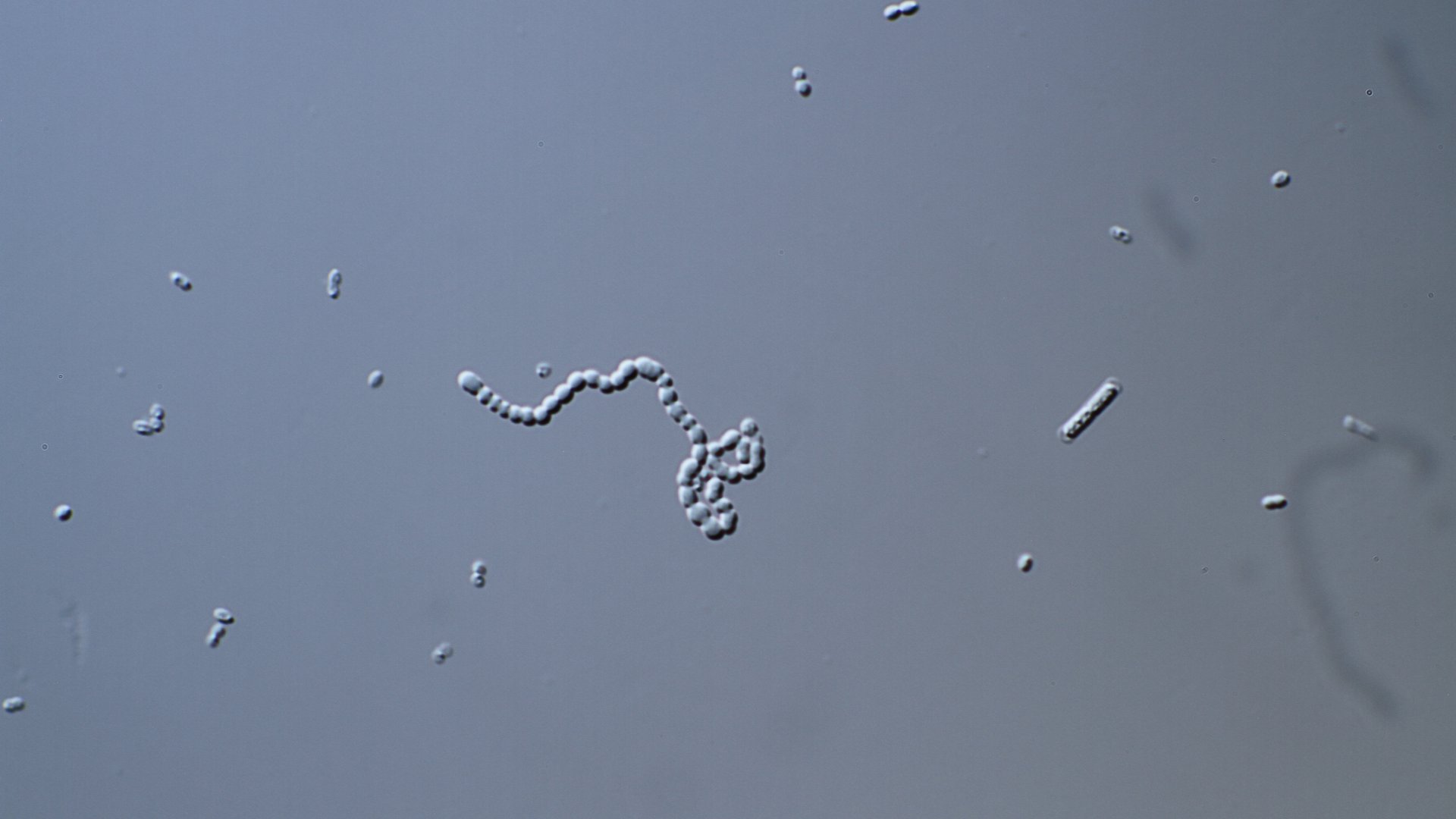L. lactis can be found in a dormant state on plants. When a herbivore, for example a cow, eats grass with L. lactis on its surface, the cow ingests the microbe. In its gastro-intestinal tract, L. lactis feeds and multiplies.
L. lactis can be found in a dormant state on plants. When a herbivore, for example a cow, eats grass with L. lactis on its surface, the cow ingests the microbe. In its gastro-intestinal tract, L. lactis feeds and multiplies.
With and without oxygen
Lactococcus lactis is a facultative anaerobe. It can live in environments with oxygen, but also in environments without oxygen. When no oxygen is present, L. lactis produces lactic acid with the help of an enzyme, called lactate-dehydrogenase. Because of this process, the microbe is still able to obtain energy from sugar. However, the bacteria grow better when oxygen is present. This makes the conversion of sugar into energy easier and faster.
Hard and soft cheeses
On a daily basis, L. lactis is used for manufacturing dairy products, like buttermilk and cheese. L. lactis secretes lactic acid, which gives buttermilk a typical sour taste. L. lactis is also used for the manufacture of both hard and soft cheese. For these two types of cheese, a different subspecies is used. Often, hard cheese is manufactured using the subspecies lactis and the subspecies cremoris is used to manufacture soft cheese. Small differences between these subspecies, cause differences in flavour between the cheese types.

